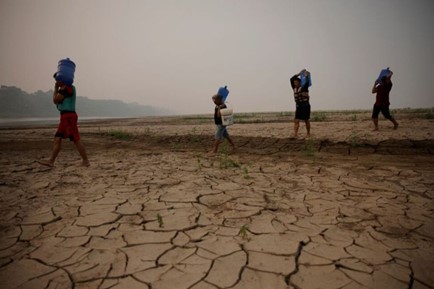
Amazon Rivers' Low Water Levels Pose New Hardships for Local Communities
The rivers running through the Amazon rainforest are reaching record-low levels, following an intense drought and reduced rainfall. This drastic change is creating severe challenges for the Ribeirinhos people, the traditional riverbank communities who depend heavily on the rivers for daily life.
As water levels drop, navigation becomes difficult, and the water turns too polluted for consumption. Many locals, especially the elderly, are forced to walk much farther to collect water. "We have to carry it from the riverbanks to our homes," said Francisca das Chagas da Silva, a resident of the region.
The Brazilian Geological Service recently warned that all rivers in the Amazon basin could fall below historic lows. This is particularly devastating for Ribeirinhos, who rely on the rivers for drinking water, transport, and livelihoods. Non-governmental organizations and the state government have been stepping in to provide drinking water, but the situation remains dire.
Transporting goods to cities is now nearly impossible for residents like Rosicleia Gomes Vieira, as the rivers have long served as their main route. The low water levels are also affecting major agricultural regions in Brazil, where key crops like soy and corn are struggling to be shipped.
With water levels still declining, the Amazon's communities face a growing crisis as their way of life is increasingly disrupted.